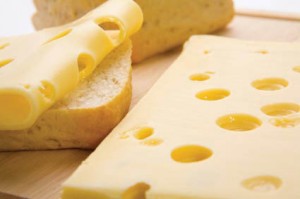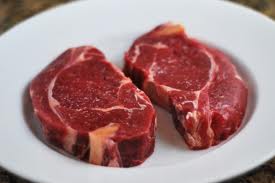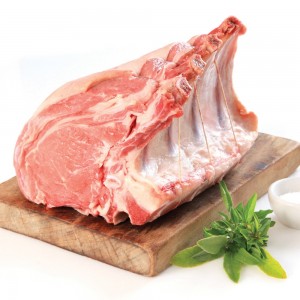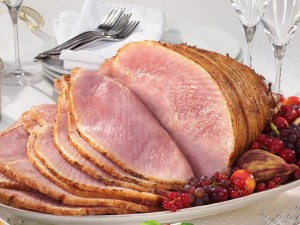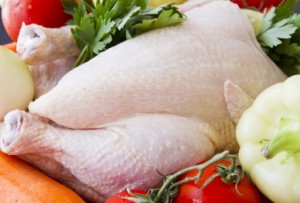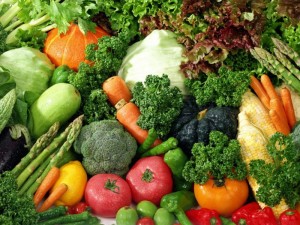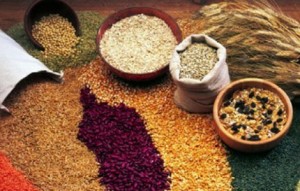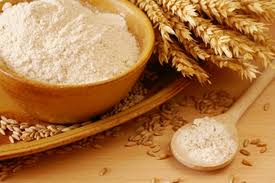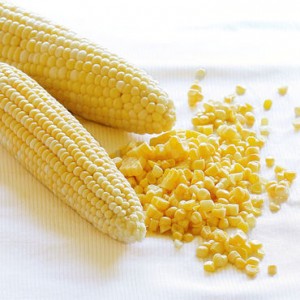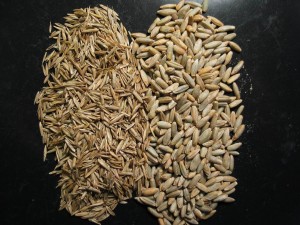Food Commodities
Mılk is an almost complete food for humans, but also a very suitable base for bacterial growth so needs careful handling and storage. Fresh milk must be stored in the refrigerator, for the minimum amount of time, away from strong-smelling foods and other contamination, preferably in its own sealed container.
Cream is the fat content of milk, skimmed or separated off from whole milk by centrifugal force. It can be sold in untreated form or after undergoing one of a variety of treatments. The resulting type of cream pasteurized, homogenized, sterilized,ultra-heat treated?must be specified on the label of the container. Cream is used to enhance food and to add enrichment to soups and sauces.
When whipped, it adds volume to desserts such as mousses and ice creams.Fresh cream must be stored like fresh milk: in the refrigerator, for the minimum amount of time, away from strong-smelling foods and other contamination, preferably in its own sealed container.
1.1.2. Cheese
Cheeses originated as a method of preservation for the nutritive value of milk .Cheeses must be stored in sealed containers, in the refrigerator, for the minimum amount of time. Uses of cheese
Ø cheeseboard at the end of a meal, offering a variety of flavours, textures and colour for those who wish to end with a savoury taste.
Ø gratinating: sprinkling grated hard cheese over a sovoury dish and finishing under a hot grill,e.g. cod mornay.
Ø to flavour baked products: cheese is added to pastries with seasoning
Ø to flavour sauces and soups: cheese is grated or diced and melted into the product,strong-flavoured cheeses are best, e.g. farmhouse cheddar, stilton
Ø to add colour, flavour and protein to salads, pasta dishes, fritters, baked potatoes,and burgers
Ø to garnish dishes, e.g.on croutes with French onion soup
1.1.3. Fats And Oıls
At room temperature fats are solid or creamy and oils are liquid. The main differences between them lie in:
-flavour
-colour
-melting point
-shortening ability
-oils cannot hold air when beaten
Different types of fat are selected according to the requirement. All fats have the ability to hold air when beaten, improve keeping qualities of products, enrich and soften gluten in flour to give a softer texture. The proportion and type of fat used and the method of production will alter the appearance of a finished product. Fats and oils must be kept cool. Oils will sour if kept in a warm atmosphere, as will butter. Store in a dry place away from strong smells. Do not keep oil near the deep fryer. Oils will thicken when kept in the refrigerator but will soon become liquid when warmed.
1.1.4. Meat
The amount of time, effort and cost in the rearing of animals creates a relatively expensive food. Meat is divided into these categories:
-beef
-veal (calf)
-lamb
-pork and Bacon
Lean meat is the muscle of the animal. Muscles that have been much used (as in older animals) form a tougher meat and so slaughter is at a specified age. Muscle fibers are held together by a connective tissue made of two proteins called collagen and elastic. On heating, collagen turns to gelatin which tenderizes the meat. Elastic is tougher but there is less of it. Fat is found under the skin, around vital organs such as kidneys, and in between muscle fibers. The fat content helps to provide flavors and moisture during cooking. With a dry method of cookery, such as roasting, the meat juices come to the surface and set in the heat. This gives roast meat its particular flavors. In most cookery, such as
boiling, these juices come into the cooking liquor and so flavors are in the sauce that
accompanies the meat.
Nutritional Value Of Meat
Meat is considerate to be important in the diet as a source of high biological protein and also contains the minerals iron, phosphorus, and a little calcium and fat-soluble vitamins A and B. Vitamin C is present in lean meat.
1-BEEF
Purchasing points for beef are: bright red flesh marbled appearance firm, creamy white fat no unpleasant odour These may be cooked by fast and dry methods of cooking.Not only the muscles of cattle are considerate to be edible, but many organs also:tongue, heart, liver, kidney, tripe(stomach lining), tail(oxtail), sweetbread(glands) and suet(kidney fat).
2-VEAL
As with all meats, the tougher parts of the animal are suited best to a moist method of cookery but because veal is young either moist or dry methods are suitable for most cuts. For example:shoulder-braise or roast breast-stew or roast best end-stew or roast Loin chops, neck cutlets and escalopes from the leg may be roasted, grilled or fried, not moist cooked.
3-LAMB
Lamb is generally tender. Moist method of cookery is suitable for this type of meat. Dry, fast methods of cookery may be used such as frying and roasting. Purchasing points for lamb are: Lean dark red flesh Smooth skin White brittle fat
4-PORK
Purchasing points for pork are:lean pink flesh white smooth fat smooth skin no unpleasant odour
D-BACON
Purchasing points for bacon are:
No sign of stickiness No unpleasant smell Thin, smooth rind White fat Deep pink flesh
Suitable methods of cookery for bacon cuts:
Collar and hock-boil or gril Back and streaky-grill or fry Gammon-boil, grill or fry
E-HAM
Ham is a kind of meat which is taken from the upper part of the leg, especially of a pig.
1.1.5. Poultry
Poultry is a term used for edible domestic fowl reared for food, such as chicken, turkey, goose, pigeon and duck. Fresh poultry must be kept in the refrigerator and used as soon as possible; frozen must be allowed to thaw thoroughly in a cool place before cooking.It is very important for all poultry to very well cook right through to avoid the possibility of salmonella food poisoning.Parts of the inside of poultry may be eaten:livers(used for paté and savouries) neck and heart(for stock, gravies and soups)
1.1.6. Eggs
It is important that the following hygiene rules are followed when handling raw,unpasteurized egg to avoid salmonella food poisoning:
Avoid using raw egg in products where there is only partial or no cooking such as mayonnaise, meringue, mousses, soft omelet?s or ice-cream. Consume as soon as possible after preparation
Do not use cracked eggs Store in a cool, dry place-preferably the refrigerator
Rotate stocks to ensure storage for minimum time Store away from other foods that may contaminate, e.g.raw meat As an egg ages, several changes take place
-yolk membrane weakens
-white becomes thinner
-size of the air space increases, causing the egg to float if tested in brine.
-bacteria enter the shell
-sulphur in the white reacts with phosphoric acid in the yolk, causing unpleasant odour
1.1.7. Fısh
As fish is succesfully frozen or chilled, all tyoes and sizes are available at all times of the year. Fish is highly nutritional.
Ø White fish contains HBV protein with vitamins A and D present in the liver(codliver oil is used for medicinal purposes)
Ø Oily fish also contain HBV protein with vitamins A and D present in the flesh
Purchasing points for fresh fish are:
-no unpleasant smell
-firm, moist flesh
-bright eyes
-no whitened flesh due to ?freezer burn?
Cuts of fish:
A- délicate : folded fillet, presentation side outwards, e.g. plaice
B- paupiette : rolled fillet, presentation side outwards, e.g. sole
C- tronçon : a slice a round white fish, e.g. turbot
D- fillet with edges trimmed neatly e.g. cod
E- darne : a cross-section slice of round fish, e.g. salmon
Fresh fish should be stored for minimum length of time in the refrigerator. Frozen fish should be sealed in bags. It should be used in rotation and never re-frozen after thawing.
1.1.8.Vegetables
Vegetables can be classified into different types according to the part of the plant from which they come:
Some vegetables may be served cooked or raw but generally cooking does help to break down the structure of the plant to aid digestion. It is important to choose the correct method of preparation and cookery of each variety, not only for presentation and retention of color but also to ensure that as many nutrients are retained as possible. Cook for the minimum time remembering that some vitamins (B and C) are water soluble and very often minerals are lost during preparation. Peel as thinly as possible because in removing skins valuable fiber is lost. It is common practice to retain cooking liquor for sauces when using moist methods of cookery. Some vegetables are rich in vitamin A (carrots and dark gren vegetables), whereas none contain vitamin E. Iron and calcium is present in dark leaves, such as spinach, but the structure of the plant can render it less available to the body than other foods.
In choosing vegetables for the menu consider:
Ø -texture : crunchy, soft, fibrous, smooth
Ø -flavors : sharp, piquant, mild, delicate, strong
Ø -color : red, orange, yellow, green, brown, white
Ø -nutritional value : a mix of vitamins and minerals
Ø -suitable methods of cookery : dry and moist
Store in dry and cool conditions away from strong light. Keep vegetables away from other foods that may be contaminated by dirt before preparation. Use them in rotation and store for as short a time as possible. To obtain vegetables at their best it is advisable to purchase daily.
Purchasing points for vegetables are:
Ø -leaves undamaged
Ø -good, bright colour
Ø -no sign of wilting or yellowing at edges
Ø -smooth appearance, not wrinkly
Ø –no unpleasant smell
Ø -no sign of mould or decay
Ø -no insects
Ø -no sign of damage from spade or machinery
1.1.9. Cereals
Cereals are the seeds of cultivated grasses and form a staple food in nearly every country in the world. They are relatively easy to grown and cheap to cultivate in comparison to meat. The most common cereals are wheat, rice, maize, barley, oats, and rye.Cereals must be kept in cool, dry store to prevent dampness and mould growth. Wholegrains keep for less time as due to their fat content they are prone to rancidity. Keep all grains in sealed containers and use in quick rotation as insects and vermin are attracted easily.
1.1.10. Flours
Generally we think of flour from wheat, but it must be remembered that it is also available from rice and corn for use in cooking. As there are many different types of flour we must make the right choice for the purpose, so we must learn the different characteristics and uses. Familiar uses of flour are in bread, pasta, cakes and pastries. Whole or wheatflour
Ø 100 per cent of the grain including the bran and germ
Ø adds colour and texture to the product
Ø is high in fibre
Ø more absorbent
Ø has limited rise in dough, producing a firm texture in the finished product
Ø all nutrients are retained. Wheatmeal or Brown flour
Ø 85-90 per cent of the grain
Ø adds colour to product
Ø moderately high in fibre
Ø produces close texture in finished product White flour
Ø 70-75 per cent of the wheatgerm
Ø does not add colour to product
Ø low in fibre
Ø not as absorbent as Brown
Ø has easy lifting properties to give soft texture
Known to be right in starch and therefore a high energy food, flour also contains the protein glutenin which turns to gluten when water is added. Gluten is important in the production of bread, cakes and pastries as it has the ability to strengthen and hold dairy.Flours vary in gluten content and so are chosen for different purposes. Brown flour is also high in vitamin B and fat, which causes it to deteriorate more quickly than white and take on a sour smell.
1.1.11. Rıce
Very similar in nutritional content to wheat, there are several types available and the choice is influenced but the dish required.High in starch, rice is a good source of thiamin, especially wild rice.
Long-grain : The grains are long and thin and a re traditionally used for savory dishes?boiled or braised in water/stock. They tend toss toy separated, giving a loose, fluffy product.Short-grain : Short, round grains bust easily in cooking and give a lot of starch to create thickening and sticky texture. This rice is traditionally used for milk puddings: flaked : manufactured into flakes for easy cooking, traditionally used for quick milk puddings ground : crushed grains-used in milk puddings and as added texture in cakes and biscuits. Often confused with semolina..rice flour : crushed grain sifted to obtain fine powder-added to cake flours.
1.1.12. Maıze (Corn)
Maize (corn)is available to us ?on the cob? or as kernels. Usually boiled and served as a vegetable in Britain, in other countries corn is ground into a course type of meal flour. We produce a finer cornflour for use in baking.Similar to that of other cereals except for the presence of carotene which is converted to vitamin A in the body.
1.1.13.Barley
It is used primarily in the manufacture of beers and whisky by malting. Quite a hardy plant, very little is eaten as part of our diet except as pearl barley which is used as garnish and thickening for soups and stews.
1.1.14.Oats
Available rolled rather than crushed, oats are used for the preparation of porridge,muesli, cakes and biscuits. They are high in fiber and relatively high in fat and protein compared to other cereals.
1.1.15.Rye
Often manufactured into nutritious crispbreads or as rye bread, which is dark in color.This cereal is resistant to the cold and so it is typical of the more northern countries of Europe.
1.1.16. Pulses
Pulses are the dried seeds of legumes, e.g.peas, beans and lentils. Nutritionally they are valuable source of fiber, protein (LBV), vitamin B and in some cases, of fat. Produced cheaply as compared with meat, they are a valuable part of any diet, but especially for vegetarians,All the pulses except lentils must be soaked for eight hours or more before cooking when they will soften and swell. Sodium bicarbonate will speed this process and not alter the nutritional content but will alter the color. Boil gently in minimum salted water until tender.Red kidney beans must be rapidly boiled for at least 15 minutes to destroy toxins that are present in the skin.Do not use pulses that are over one year old as they toughen with age and re difficult to cook successfully.
1.1.17.Nuts
Although not eaten in large quantities, they are valuable addition to the diet, especially for vegetarians, as they are high in starch, LBV protein, fats, vitamin B and minerals. Manufacturers include nuts in cereals and confectionery to add nutritional and energy value.
Popular nuts available to us:
- · almond · brazil · hazelnut · peanut · walnut
- · coconut · pecan · cashew · chestnut · pistachio
For eating on their own they may be For use in cookery they may be purchased as:
Ø dry roasted
Ø tossed in various seasonings
Ø salted
Ø covered in chocolate or yoghurt
Ø mixed with raisins
Ø left in their shells
Ø whole or halves
Ø flaked
Ø split
Ø nibbed
Ø ground
Nuts have limited shelf life and must be stored in cool, dry conditions and used in strict rotation as they are liable to rancidity because of their fat content.It is important to display a notice to customers ensuring their awareness of nuts included in any dishes as some people have an allergic reaction to them.
1.1.18..Fruıt
Mainly eaten for their flavors, fruits can also add nutritional value, texture,refreshment and moisture to the diet. Some are an aid to digestion in eating greasy foods and to help break down proteins e.g.apple sauce is eaten with pork. Fruits are also an invaluable source of nutrition:
-citrus fruits and blackcurrants are rich in vitamin C
-vitamin A is found in yellow fruits such as apricots
-low in fat(except avocado)
-good source od carbonhydrates
-source of dietary fibre(especially bananas, figs and prunes
Classification of fruits
Type Some examples Purchasing points
Hard apple, pear not under-ripe or over-ripe stone cherry, apricot, avocado,peach good colour, no bruises citrus orange, lemon, lime, grapefruit intact, no brown or soft patches soft strawberry, raspberry, black or recurrants no sign of mould growth tropical melon, banana, pineapple stem rhubarb Fruits need to be kept in a cool, well ventilated place and used as soon as possible.
Soft fruits may be stored in the refrigerator.
1.1.19.Sugars
Classed as carbonhydrate and energy-giving, sugars are found in many plants, fruits,
stems and as honey. We can obtain sugar in our diet by eating these. Apart from acting as a
sweetener, sugars have important functions in cooking as:
Ø preservative?bacteria do not grow in high sugar solutions, e.g.jam
Ø colouring?dark Brown sugars add colour to rich cakes
Ø decoration?in icings
Ø glaze?dusted on products and heated in the oven or painted on as syrup
Ø in baking?promotes aeration and colour, affects gluten, yeast and egg white
Ø stabilizer?in sauces prevents ?split?, also promotes shine
Ø lowers freezing point?used in ice creams to keep them softer
1.1.20.Herbs
Generally herbs are used to flavors foods but some are known to have medicinal properties. Herbs are available in several different forms:
Ø dried?stronger flavour due to moisture removal but this is soon lost in storage,some discolouration, convenient, used for inclusion in foods rarely for decoration,inexpensive.
Ø frozen?prepared for use then frozen, can be used straight from the freezer, little discolouration, convenient, used for inclution in foods, moderately expensive.
Ø windowsill?grown in small containers to be kept near window and watered regularly providing fresh herbs, for decoration and inclusion into foods, inexpensive, sometimes inconvenient.
Ø fresh?from suppliers in crush-proof packs to be kept refrigerated, convenient, short keeping time.
1.1.21.Spıces
Mostly grown in hot countries, spices are the dried roots, seeds and bark of plants.Used whole or crushed, they have strong aromatic flavors and before the advent of refrigerators were used to mask the flavors of poor quality and stale food.
1.2.Vıtamıns And Mınerals
Vitamins help the body to process nutrients and combat infection and disease. The body makes some vitamins and gets others from food. Most minerals perform similar functions, while others form part of the body?s structure.Some vitamins are soluble in water, while some are soluble in fat. Water-soluble vitamins, such as B and C, can not be stored in the body and need to be replaced daily. Fatsoluble vitamins, A, D, E and K, can be stored in the liver for approximately one week.
Some minerals, such as calcium, are present in the body in quite large quantities-there is almost 1.4 kg of calcium in the average healthy adult. Other minerals, which can be just as important, are only needed in complex combinations by the body-many of them depending on the presence of other vitamins and minerals to catty out their functions. But a wellbalanced diet should contain all the nutrients needed for a healthy life. The best sources are fresh or unprocessed fruit, vegetables, dairy products, cereal foods, meat and fish. Some of these nutrients can be destroyed in the processing of refined foods, and careless storage or cooking can destroy water-soluble vitamins unnecessarily. It is important to pay attention to the way food is cooked and include plenty of raw fruit and vegetables in your diet.
KAYNAK
MEB MEGEP YIYECEK ICECEK HIZMETLERI MESLEKI INGILIZCE – 1 ANKARA 2007
- Genel
- Yorumlar(0)

